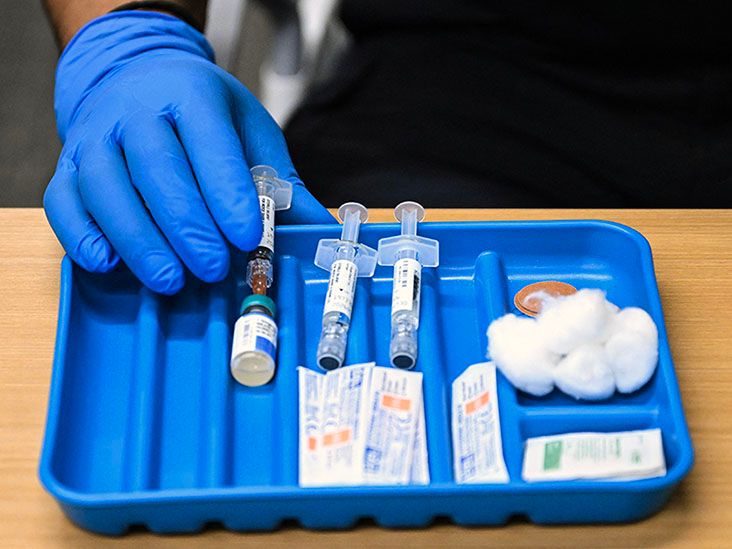Pancreatic cancer is cancer that starts in the pancreas, which is an organ that sits behind the stomach and assists with digestion and blood sugar regulation.
Pancreatic cancer develops in stages, with stage 0 representing the earliest stage of the disease and stage 4 the most advanced.
Doctors will consider the disease stage at the point of diagnosis to assist decisions about a person’s treatment plan and outlook.
This article outlines the different stages of pancreatic cancer and lists some potential symptoms. It also provides information on how doctors diagnose and treat pancreatic cancer and considers the outlook for people living with the disease.
Finally, this article offers advice on where to seek support and financial aid following a cancer diagnosis.

According to the
This system consists of stages 0 through 4, with stage 0 representing the earliest stage of disease and stage 4 representing the most advanced.
For each of the AJCC stages, doctors also assign a TNM stage grouping. TNM is an abbreviation that stands for:
- Tumor (T): The size of the tumor and whether it has grown outside of the pancreas and into nearby blood vessels.
- Nodes (N): Whether the cancer has spread to nearby lymph nodes and the number of lymph nodes affected.
- Metastases (M): Whether the cancer has spread or “metastasized” to distant lymph nodes or organs, such as:
Doctors may also use the
- Resectable: Tumors in this category can be surgically removed. The tumor is present in the pancreas and may extend to just outside it. The tumor does not yet involve nearby major veins or arteries.
- Borderline resectable: The tumor may have spread to nearby major veins or arteries. Doctors tend to use this category if they are unsure if the tumor can be removed via surgery. It may be possible to remove the tumor with surgery. However, there is a high chance that surgery will not remove all of the cancer cells. A person may require chemotherapy to shrink the tumor before undergoing a repeat imaging test to see if surgery is now possible.
- Unresectable or locally advanced: At this stage, it is not possible to remove the tumor with surgery. The tumor may have spread to the nearby veins and arteries or distant parts of the body.
- Metastatic: Surgery will not be able to remove the cancer as it has spread to other organs.
- Recurrent: This means that cancer has come back after treatment. The type of treatment for recurrent pancreatic cancer depends on where it has returned.
Stage 0 represents the earliest stage of pancreatic cancer. The TNM stage grouping for this stage is as follows:
- Tumor (Tis): The classification “Tis” stands for “carcinoma in situ.” Doctors may use this terminology to describe cancer that is confined to the surface layer of pancreatic duct cells and has not spread beyond the pancreas.
- Nodes (N0): The classification N0 indicates the cancer has not spread to nearby lymph nodes.
- Metastases (M0): The classification M0 indicates the cancer has not spread to distant parts of the body.
Doctors classify Stage 1 pancreatic cancer into
Stage 1A pancreatic cancer is assigned a tumor factor of 1 (T1), indicating that the tumor is confined to the pancreas and is no larger than 2 (centimeters) cm across.
Stage 1B pancreatic cancer is assigned a tumor factor of 2 (T2), indicating that the tumor is confined to the pancreas and is larger than 2 cm but less than 4 cm across.
Both Stage 1A and Stage 1B are assigned a node factor of N0, and a metastases factor of M0, indicating that the tumor has not spread to nearby lymph nodes nor distant parts of the body.
Doctors classify Stage 2 pancreatic cancer into
Stage 2A
Stage 2A pancreatic cancer is assigned a tumor factor of 3 (T3), indicating that the tumor is confined to the pancreas and is larger than 4 cm across.
As with earlier stages of pancreatic cancer, Stage 2A has a node factor of N0 and a metastases factor of M0.
Stage 2B
Stage 2B pancreatic cancer may be assigned a tumor factor of T1, T2, or T3.
Stage 2B pancreatic cancer always receives a node factor of 1 (N1), indicating that the cancer has spread to no more than three nearby lymph nodes.
As with earlier stages of pancreatic cancer, Stage 2B has a metastases factor of 0 (M0).
Stage 3 pancreatic cancer may have a tumor factor of 1, 2, 3, or 4. A tumor factor of 4 (T4) indicates that the cancer is growing outside of the pancreas and into nearby major blood vessels.
Stage 3 pancreatic cancers with a tumor factor of 1, 2, or 3 also have a node factor of 2 (N2), which indicates that the cancer has spread to four or more nearby lymph nodes.
Stage 3 pancreatic cancers with a tumor factor of 4 (T4) have the node factor “Any N,” which indicates that the cancer may or may not have spread to nearby lymph nodes.
All Stage 3 pancreatic cancers have a metastases factor of 0 (M0), indicating that the cancer has not spread to distant parts of the body.
Stage 4 pancreatic cancer is assigned a tumor factor of “Any T,” indicating that the tumor can be any size.
This stage also receives a node factor of “Any N,” indicating that the cancer may or may not have spread to nearby lymph nodes.
Unlike in previous stages, Stage 4 pancreatic cancer has a metastases factor of 1 (M1), indicating that the cancer has spread to distant parts of the body, such as the:
- liver
- peritoneum
- lungs
- bones
As the
- the location of the cancer
- the treatments the person has previously received
- the person’s overall health
The treatment for pancreatic cancer depends largely on the disease stage, as well as other factors, such as the person’s overall health.
Some potential treatment options
- surgery to remove all or part of the pancreas and potentially the following organs:
- the gallbladder
- the spleen
- part of the stomach and small intestine
- ablation or embolization treatments, which destroy tumors using high-frequency radio waves, chemicals, or extreme temperatures
- radiation therapy, which uses high-energy X-rays or particles to destroy cancer cells
- chemotherapy drugs, which kill cancer cells or prevent them from replicating
- targeted drugs, which target proteins that control how cancer cells grow, replicate, and spread
- immunotherapy drugs, which stimulate the person’s own immune system to recognize and destroy cancer cells more effectively
- pain medications to control pain
Treatment can also vary based on the stage of the tumor:
- Resectable: A person will require surgery to remove the tumor. They will also need chemotherapy or a combination of chemotherapy and radiation therapy.
- Borderline resectable: To help shrink the tumor, a person will need to undergo chemotherapy. If this is successful, surgery can remove the tumor.
- Unresectable: As surgery will not be able to remove the tumor, a person will undergo chemotherapy, immunotherapy, or targeted medications.
- Metastatic: A person will undergo chemotherapy, immunotherapy, or targeted medications.
The Surveillance, Epidemiology, and End Results (SEER) database provides the 5-year relative survival rates for people living with cancer in the United States.
The 5-year relative survival rate for pancreatic cancer is as
| Stage | 5-year relative survival rate (%) |
|---|---|
| Localized, meaning there is no sign of the cancer having spread outside of the place it originated | 44.3 |
| Regional, meaning the cancer has spread from the place it originated to nearby lymph nodes or other structures | 16.2 |
| Distant, meaning the cancer has spread to distant parts of the body | 3.2 |
It is important to note that the above statistics only take into account the cancer stage at diagnosis and do not consider other factors that may affect a person’s individual outlook, such as:
- the person’s age
- the person’s overall health
- how well the person’s cancer responds to treatment
Receiving a cancer diagnosis can have a significant effect on a person’s mental health and may trigger a range of emotions, such as shock, frustration, and anxiety.
People who receive a cancer diagnosis can ask their doctor or cancer treatment team for information on local and online support groups.
The
People can also consider joining The Cancer Survivor’s Network (CNS), which is a peer support group where people can share their experiences of living with or surviving cancer or caring for someone with cancer.
The National Pancreatic Cancer Foundation (NPCF) lists the following organizations that provide financial aid for people living with pancreatic cancer:
- Project Purple: Project Purple offers assistance with medical and living expenses.
- Ron Foley Pancreatic Foundation: This foundation provides direct financial aid to people living in the following states:
- New England
- New York
- New Jersey
- David’s Dream and Believe Cancer Foundation: This foundation offers financial assistance and other support for people affected by a cancer diagnosis living in New Jersey.
- Florida Cancer Specialists: Florida Cancer Specialists helps cover living expenses for Florida residents living with cancer.
Below are some answers to frequently asked questions about pancreatic cancer.
How quickly does pancreatic cancer progress?
It is difficult to say how quickly pancreatic cancer progresses since most people do not receive a diagnosis until the disease is at an advanced stage.
Has anyone recovered from stage 4 pancreatic cancer?
The “distant” SEER stage is the one that most accurately aligns with Stage 4 cancer and is associated with a 5-year relative survival rate of
This indicates that approximately 3.2% of people who receive a diagnosis of stage 4 pancreatic cancer go on to survive at least another 5 years following the diagnosis.
Is it worth going through chemotherapy and other treatments for stage 4 pancreatic cancer?
Figuring out whether it is worth undergoing treatment for stage 4 pancreatic cancer is a personal decision. A person may wish to discuss the potential benefits and risks with a doctor.
As the
Pancreatic cancer develops through stages 0–4, with stage 0 representing the earliest stage of the disease and stage 4 the most advanced.
People do not typically develop symptoms of pancreatic cancer until the disease has become quite advanced.
The treatment for pancreatic cancer depends largely on the stage of the disease at diagnosis. Potential treatment options include chemotherapy, targeted drugs, and surgery to remove all or part of the pancreas.
The survival rates for pancreatic cancer differ according to disease stage at diagnosis. Early-stage disease is associated with a 5-year relative survival rate of 44.3%, while late-stage disease has a 5-year relative survival rate of 3.2%.
However, these figures do not take into account other important factors, such as a person’s age and overall health and how their cancer responds to treatment.


